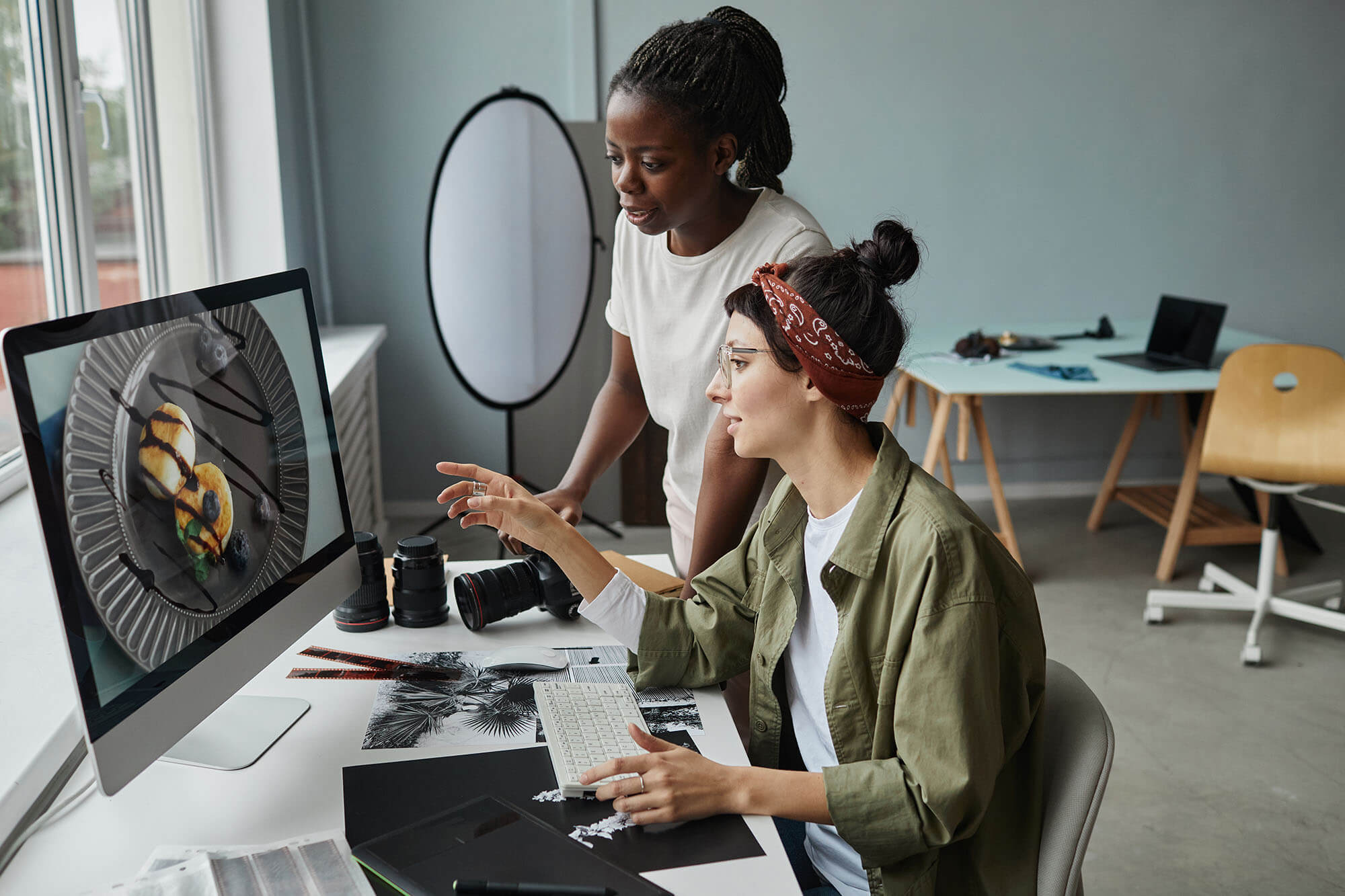A Beginner’s Guide to E-Commerce Photography: Mastering the Art of Selling Online
Introduction:
In the world of e-commerce, the quality of your product photography can make or break a sale. A beautiful, professional photo can entice a customer to purchase, while a low-quality image may discourage them from even considering it. As a beginner in e-commerce photography, it’s important to understand the basics to create appealing and compelling photos that sell your products.
This A Beginner’s Guide to E-Commerce Photography will cover everything you need to know to improve your product photography skills, including lighting, composition, and editing techniques. With the right tools and techniques, you can create stunning images that showcase your products in the best light possible.
The Importance of Good E-Commerce Photography
Why is e-commerce photography so important? The answer is simple: your product photos are the first thing a customer sees when browsing your website. They serve as a visual representation of the product, providing information about its size, texture, and overall appearance. In a sense, they’re your sales pitch, and they must be good.
Good product photography is essential for building brand trust and increasing conversions. Studies have shown that high-quality product photos can lead to a 68% increase in conversions. That’s why it’s essential to invest in good quality equipment and put effort into creating appealing images that accurately represent your products.
Equipment for E-Commerce Photography
To get started with e-commerce photography, you’ll need to invest in some basic equipment. Here’s a list of essentials you should consider:
Camera: A good quality digital camera is the first step towards creating great product photos. If you’re just starting out, a basic point-and-shoot camera will suffice. However, if you want to take your product photography to the next level, consider investing in a DSLR camera with a fast lens.
- Canon EOS Rebel T100 / 4000D DSLR Camera Bundle
- Canon EOS Rebel T7 DSLR Camera Bundle with Canon 18-55mm Lens
- Canon EOS R6 Mirrorless Digital Camera 20MP Sensor with RF 24-105mm
- Nikon D5600 24.2MP DSLR Digital Camera with 18-55mm Lens
- Camera Bundle for Nikon Z5 Mirrorless Camera with Z 24-50mm f/4-6.3 and Z DX 50-250mm f/4.5-6.3 VR Lens
- Camera Bundle for Nikon Z6 II Mirrorless Camera with NIKKOR Z 24-70mm f/4 S Lens
- Sony Alpha a6400 24.2MP Mirrorless Digital Camera with 16-50mm Lens
- Sony Alpha a7 IV Mirrorless Digital Camera 33MP Full-Frame with FE 28-70mm Lens
Lighting: Lighting is key to creating attractive product photos. Invest in a softbox or umbrella light kit to ensure your product is lit evenly and looks its best.
- MOUNTDOG Softbox Lighting Kit Studio Photography Continuous Lights
- ZUOCHEN Lighting Kit Continuous
- NEEWER 600W Strobe Flash Studio Light Photography Kit
- Godox SK400II 3 x 400Ws 2.4G Bowens Mount Strobe Flash Kits
Tripod: A tripod is essential for keeping your camera steady and reducing blur in your photos.
- Camera Tripod, Geekoto 77″ Aluminum Tripod for DSLR
- K&F Concept Camera Tripod, 64-inch Professional Aluminum Tripod
- NEEWER Camera Tripod Monopod with Rotatable Center Column
- Manfrotto Befree Advanced Travel Al Tripod
- Manfrotto MKBFRTC4GT-BHUS Befree Advanced Travel Tripod
Background: A plain background is ideal for e-commerce photography, as it keeps the focus on the product. Consider purchasing a solid colour backdrop or a tabletop lightbox for a professional look.
- Photography Background Paper 3PCS 6Patterns Double-Sided
- Photography Background Paper with Stand 7Pcs 14Patterns
- Food Photography Backdrop Paper 4 Pack Kit
- White PVC Backdrop Photography Backdrop Matte & Reflective PVC
- Photography Acrylic Display Boards 12”×12”/30×30cm
Lighting Techniques for E-Commerce Photography
One of the most important elements of e-commerce photography is lighting. Proper lighting can make all the difference in showcasing your product’s best features and making it look appealing to customers. Here are some tips for lighting your product photos:
- Natural Light: If you have access to natural light, make use of it. Place your product near a window with diffused light, or shoot on an overcast day to reduce shadows and highlights.
- Artificial Light: If natural light isn’t available, you’ll need to use artificial light. Use a softbox or umbrella light to evenly light your product, and avoid harsh shadows and reflections.
- Three-Point Lighting: A three-point lighting setup is a classic technique for product photography. It involves using three lights positioned at 45-degree angles to the product, creating a well-lit image with subtle shadows.
Composition Techniques for E-Commerce Photography
Composition is the art of arranging elements in a photo to create a pleasing and appealing image. Here are some composition techniques to keep in mind when taking product photos:
- Rule of Thirds: The rule of thirds is a classic composition technique that involves dividing the frame into thirds horizontally and vertically. Place the product along one of the lines or at the intersection of two lines for a visually balanced image.
- Angle of View: Experiment with different angles to showcase your product from different perspectives. Try shooting from above, at eye level, or from below to find the best angle for your product.
- Background: Keep the background simple and uncluttered to allow the product to be the main focus. A solid color background works well, but you can also experiment with patterned backgrounds if they complement your product.
- Props: Adding props to your product photos can help create a sense of context and give customers a better understanding of how the product can be used. Just make sure the props don’t detract from the product itself.
Editing Techniques for E-Commerce Photography
Once you’ve taken your photos, it’s time to edit them to make them look their best. Here are some editing techniques to keep in mind:
- Adjust Exposure: Use editing software to adjust the exposure levels and bring out the details in your product.
- Remove Imperfections: Use editing tools to remove any blemishes or imperfections in the product or background.
- Enhance Colors: Use colour correction tools to enhance the colour of your product and make it look more appealing.
- Add Shadows: If necessary, use editing tools to add shadows to your product photos to give them a more natural look.
FAQs for A Beginner’s Guide to E-Commerce Photography
- What camera should I use for e-commerce photography?
A basic point-and-shoot camera will suffice for e-commerce photography, but a DSLR camera with a fast lens will produce better results.
- Do I need a studio to take e-commerce photos?
No, you don’t need a studio to take e-commerce photos. You can use natural light or invest in a lighting kit and take photos in your own home or office.
- Can I use a smartphone for e-commerce photography?
Yes, you can use a smartphone for e-commerce photography. Just make sure to use a tripod and good lighting to get the best results.
- What editing software should I use for e-commerce photography?
There are many editing software options available, both free and paid. Some popular options include Adobe Lightroom, GIMP, and Canva.
The links provided offer a selection of books about product photography.
- Product Photography: Lighting, Composition, and Shooting Techniques
- The New Lighting for Product Photography
- Product Photography Guide For Beginners
- Read This If You Want to Take Great Photographs
- Product Photography Magic
- The Digital Photography Book
Conclusion
E-commerce photography is an essential aspect of selling products online. With the right equipment, lighting techniques, composition techniques, and editing tools, you can create stunning product photos that will help increase conversions and build brand trust. By following this A Beginner’s Guide to E-Commerce Photography, you’ll be well on your way to mastering the art of selling products online.
If you are interested in exploring more content related to the current topic, we recommend that you peruse the other posts that we have provided below. By clicking on these links, you will be directed to articles and resources that cover the similar subject matter, thereby enabling you to broaden your knowledge and deepen your understanding of the topic at hand. We encourage you to take advantage of this opportunity to delve deeper into the subject and expand your knowledge base.
What is product photography?
How to Use 360 Product Photography for eCommerce
10 ways you can put product photography to work for you
The Key Factors for Successful 360 Product Photography
5 Ways to Improve Your Product Photography for E-Commerce
Exploring the Intersection of Photography and AI: How Technology is Changing the Art of Picture Taking
The Power of 360 Product Photography in Marketing
Google BARD vs ChatGTP in Photography: Unveiling AI Power
Lighting Techniques for Flawless Product Photography
Unlocking the Potential of AI in Photography: Making the Process Easier and More Efficient
The Ultimate Guide to Choosing the Best MacBook with M2 chip for Photographers in 2023
AI and Photography: A New Era of Picture Taking



Comments
Sarah
Costin Constantinescu
Max
Costin Constantinescu